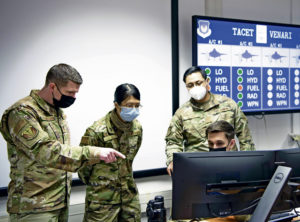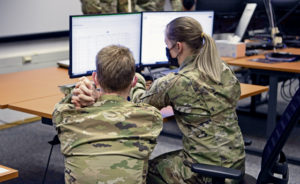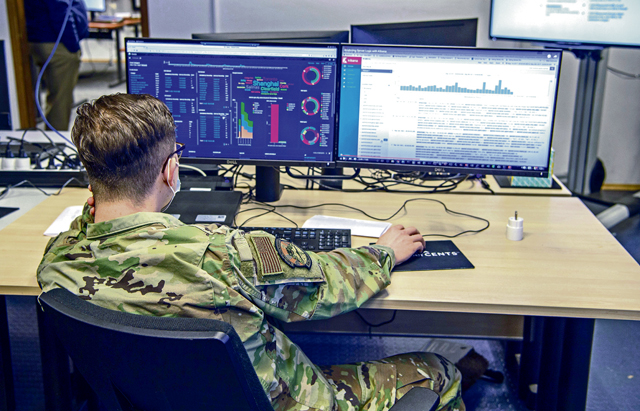
U.S. Air Force Europe-Air Forces Africa Directorate of Communications led a cyber-training exercise, Tacet Venari, at the USAFE Regional Training Center, April 12-23.
Tacet Venari is Latin for Silent Hunt, which describes the goal of the exercise: to hunt for adversaries within USAFE-AFAFRICA weapons systems. The exercise is one of several DOD-wide efforts that provides mission assurance and enhances command and control by ensuring warfighters have the skills needed to deliver defensive cyber operations.
“We’re preparing Air Force mission defense teams to do defensive cyber operations on weapons systems,” said U.S. Space Force Tech. Sgt. Auguste Archer, an exercise planner and cyber integrations specialist. “This exercise is critical because it provides an opportunity for students to learn in a realistic environment and fail forward to improve their skills without compromising the mission.”
MDTs from the 86th Communications Squadron, Ramstein Air Base; 52nd CS, Spangdahlem Air Base; 422nd CS, Royal Air Force Croughton, England; 603rd Air and Space CS, Ramstein Air Base; and 1st Combat CS, Ramstein Air Base, participated in this iteration of the exercise.
Silent Hunt provides a realistic cyber threat scenario for the MDTs to tackle so they can learn how to counter threats at the tactical level, using the same skills needed for real-world defense operations.

Importantly, it prepares Airmen to play an active role in cyber defense. Rather than focusing on tools to prevent adversaries from gaining access to networks, this active framework assumes a compromise in the network and directs efforts to identifying and categorizing adversary activity.
“My responsibility in the exercise was to understand what the adversary is thinking when they’re trying to attack and to take those tactics and try to replicate them within the network for students,” said 1st Lt Christopher Tran, the exercise red team lead. “Every day, cyber-attacks are evolving, so we need our teams to be able to defend against that. This is especially true for potential attacks against our weapons systems.”
The training Silent Hunt furthers vital concepts and initiatives like Combined, Joint All-Domain Command and Control and Agile Combat Employment by ensuring that the weapons systems needed to execute those concepts remain ready and secure.
“The most valuable part of this exercise for us is the ability to get more practice. It enforces the important things we learned during our initial qualification course,” said Senior Airman Frederic Borries, 52nd CS MDT member and exercise student. “Having an active, known, adversary that we need to find helps us tune our vision to make us more effective at finding those adversaries; we develop important instincts.”
Cyber training events like Silent Hunt are critical to preparing operationally focused Airman to deliver unparalleled mission assurance to the warfighter.



